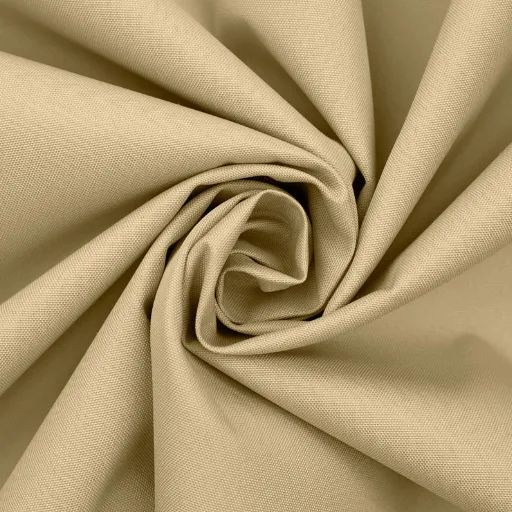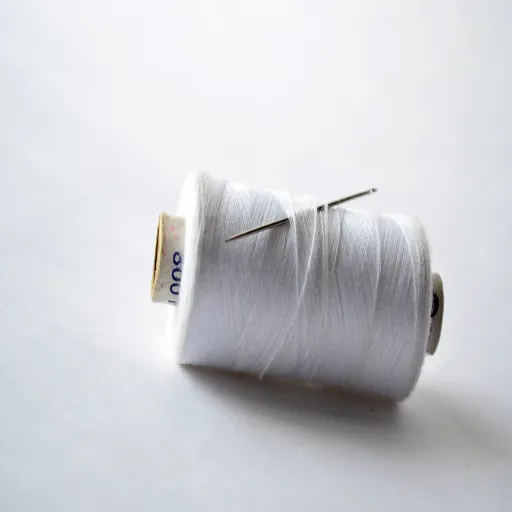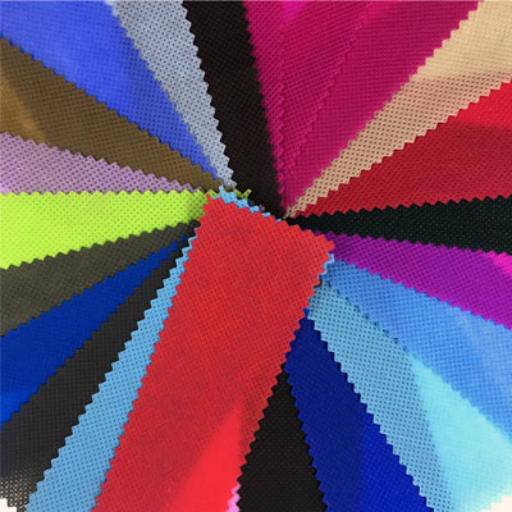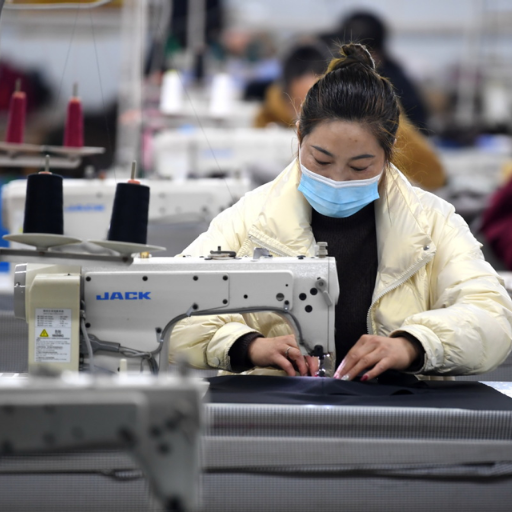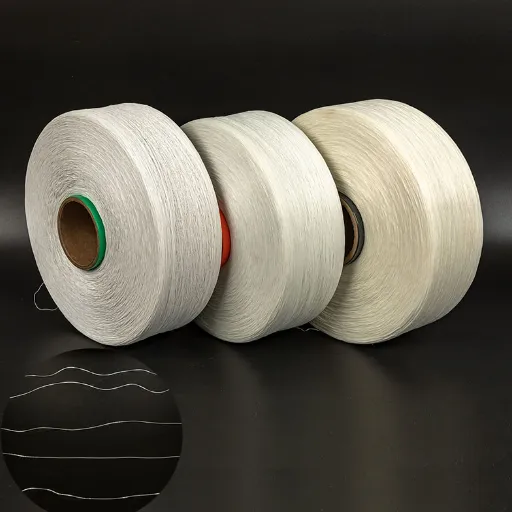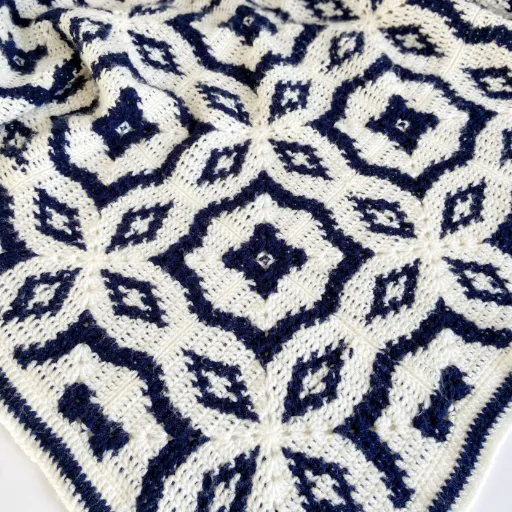Selecting the ideal fabric for clothing or textiles matters significantly when it comes to comfort, longevity, and aesthetics. Among the most preferred choices are polyester and cotton, each with distinct advantages and limitations. Understanding these key differences helps you make informed decisions—whether you’re shopping for activewear, bedding, or everyday clothing. This comprehensive guide examines the essential qualities of both fabrics, their optimal applications, and practical considerations to match your specific needs.
Understanding the Differences Between Cotton and Polyester
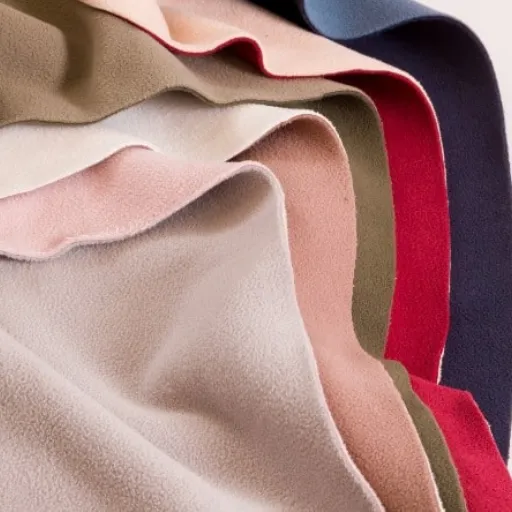
Overview of Cotton and Polyester
Cotton is a natural fiber harvested from the cotton plant’s seeds. It’s celebrated for its softness, breathability, and exceptional comfort. Cotton fabrics offer excellent moisture absorption, making them suitable for hot climates or activities involving perspiration. The material is also hypoallergenic, reducing the likelihood of skin irritation or allergic reactions. However, cotton can shrink when washed and tends to wrinkle, requiring more maintenance.
Polyester is a synthetic fiber constructed from petrochemicals. Known for its robustness, wrinkle resistance, and quick-drying properties, polyester is commonly used in activewear and everyday garments subjected to significant wear. However, polyester offers less breathability than cotton and can retain odors—a potential drawback in tropical or humid conditions.
🌿 Choose Cotton If You Value:
- Maximum comfort and softness
- Natural breathability
- Hypoallergenic properties
- Eco-friendly options (organic)
⚡ Choose Polyester If You Value:
- Durability and longevity
- Moisture resistance
- Easy maintenance
- Wrinkle-free appearance
Key Properties of Cotton
Cotton is appreciated for its exceptional softness and naturally breathable quality, making it the ultimate fabric for everyday clothes and bed linens. The fiber is remarkably gentle on the skin, minimizing irritation while providing a comfortable, lightweight feel. Its natural moisture-absorbing attributes contribute to comfort by keeping skin dry and reducing perspiration buildup.
Another significant characteristic of cotton is its versatility. The fiber can be dyed and woven to produce a vast range of textures, patterns, colors, and designs. Cotton fabrics provide warmth during cooler weather while remaining breathable in heat—making them excellent materials for year-round clothing applications.
While cotton may not match synthetic fibers like polyester in durability, it remains a reasonable choice for most applications. Cotton withstands frequent laundering and ironing without losing significant quality. This balance between comfort, versatility, and moderate durability continues to give cotton widespread acceptance across various cultures and industries.
Key Properties of Polyester
Polyester represents a synthetic fiber renowned for high durability and endurance. Its most outstanding characteristic is the ability to maintain shape, keeping garments and materials intact through extended use. Since polyester resists wrinkling considerably, it serves well for pieces that merge style with convenience and minimal maintenance requirements.
Another crucial quality is polyester’s moisture-wicking capability. Unlike fibers like cotton that absorb moisture, polyester moves perspiration away from the body, allowing it to evaporate quickly. This makes polyester acceptable for sporting activities, outdoor events, and situations where moisture management is essential. Additionally, its resistance to mold and mildew makes polyester practical for various settings and climates.
Polyester is lightweight and can be blended with other fibers to create fabrics with varying textures and feels. Its durability and resistance to abrasion make it efficient for industrial applications, upholstered furniture, and home-textile products. Combined with cost-effectiveness and ease of modification, polyester remains one of the most widely used fibers globally.
Durability and Longevity: Cotton vs Polyester
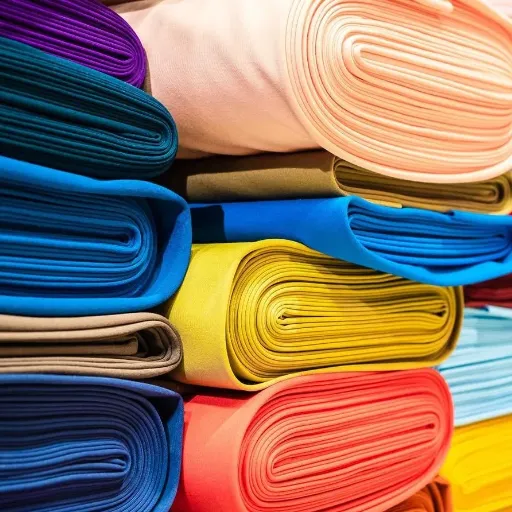
Cotton Fabrics: Grinding Endurance
Cotton fabrics are usually regarded as comfortable and breathable, but they demonstrate less durability compared with synthetic fibers like polyester. Cotton fibers may weaken when subjected to repeated washings, heat exposure, or prolonged sunlight. Furthermore, cotton yarn is prone to pilling and tearing when not woven tightly.
One significant factor affecting cotton’s durability is its moisture absorption capacity. While beneficial for comfort, this attribute can weaken fibers when clothes remain wet. Fabric disintegration and abrasion occur faster at stressed points like seams or elbows. However, treatments such as mercerizing or blending with synthetic fibers can enhance cotton’s strength and resilience.
With proper maintenance, gently handled cotton can last many years. Washing in cold water, avoiding harsh detergents, and air drying all contribute positively to untreated cotton’s lifespan. Cotton remains one of the most popular and versatile natural fibers for people seeking reasonable durability while balancing comfort with usability.
Durability of Polyester Fabrics
Polyester fabrics are renowned for their strength and ability to withstand wear-and-tear far better than natural fibers. The material naturally resists stretching, shrinking, and wrinkling, maintaining its attractiveness even under harsh conditions. This shape retention through regular use over long periods represents an attractive advantage for high-performance applications.
One significant factor enhancing polyester’s durability is its resistance to environmental elements. Being polymeric, polyester fibers survive moisture, mildew, and ultraviolet rays more effectively, meaning the fabric retains its original features regardless of weather conditions. Polyester doesn’t readily absorb water like natural fibers, so it dries quickly and resists water-based stains.
Polyester fabric naturally resists abrasion and surface dirt. Following proper maintenance instructions—particularly avoiding washing and drying at extremely high temperatures—extends the material’s comfort and longevity. Polyester has earned its place within almost every market, from fashion and garments to industrial applications requiring long-term performance.
Comparative Analysis of Lifespan
| Factor | Cotton | Polyester |
|---|---|---|
| Overall Durability | Moderate | High |
| Shrink Resistance | Low | High |
| Wrinkle Resistance | Low | High |
| Color Retention | Moderate (fades over time) | High |
| UV Resistance | Low | High |
| Mold/Mildew Resistance | Low | High |
| Biodegradability | High (natural fiber) | Low (decades in landfills) |
Comparing longevity reveals advantages in favor of polyester. Being synthetic, polyester demonstrates high durability against normal wear, tear, and environmental factors like moisture and UV exposure. Natural fibers such as cotton offer superior breathability and comfort but tend to degrade faster under constant use and environmental stress. For applications demanding long-term robustness, polyester proves more desirable.
Polyester’s longevity during frequent use extends to consistent washing. While natural fibers might shrink, fade, or lose strength over time, polyester maintains form, color, and strength through recurrent wearing and cleaning. This characteristic proves valuable in apparel, furnishing fabrics, and outdoor commodities where continuing function is crucial.
⚠️ Environmental Consideration
Despite its durability benefits, polyester poses environmental concerns. Natural fibers like cotton are biodegradable, while polyester may persist in landfills for decades unless recycled. The strength polyester provides benefits consumers, but these longevity advantages raise environmental questions that necessitate responsible use and disposal practices.
Comfort and Breathability in Fabrics
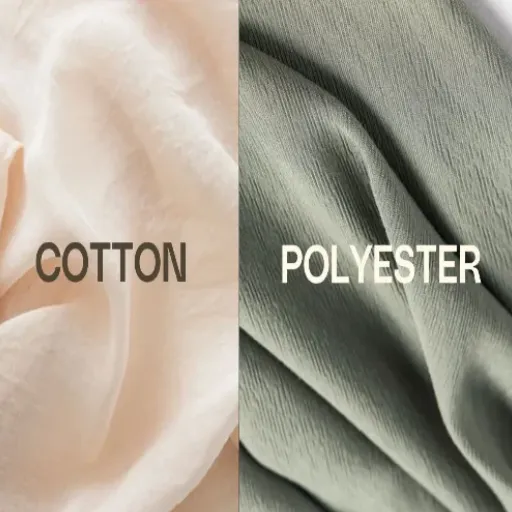
Breathability of Cotton
Cotton is commonly recognized as one of the most breathable fabrics available. Its natural open structure allows air circulation, providing timely temperature regulation and maximum comfort for the wearer. This makes cotton an obvious preference for those living in warmer climates. Additionally, cotton’s moisture-wicking properties mean perspiration doesn’t stay close to the skin, allowing the garment to breathe effectively.
Cotton’s moisture absorption capacity significantly contributes to breathability. Cotton can absorb up to 27 times its weight in water, making it excellent for perspiration management. This native property allows the cloth to absorb sweat and release it into the air rather than storing it and causing discomfort. Consequently, cotton attire is highly sought after for physical activities and everyday life in humid environments.
Furthermore, cotton’s hypoallergenic properties complement its breathable structure. By allowing air to enter the fabric and wicking away moisture, it avoids creating an environment that traps moisture and heat against the skin. This makes cotton preferable for people with allergies or sensitive skin, ensuring both comfort and skin health across varying weather conditions.
Breathability of Polyester
Polyester is a human-made fabric valued for its strength and durability. However, breathability is an area where synthetic fabrics like polyester generally concede to natural ones such as cotton. Traditional polyester doesn’t allow air to pass through as effectively since its woven and knitted structures can restrict air circulation. This limitation can cause discomfort and make the wearer uncomfortable in hot or humid conditions.
Nevertheless, significant textile advancements have improved polyester’s moisture-wicking capabilities. Modern polyester fabrics with specialized moisture-wicking features can move perspiration away from the body, causing it to evaporate more quickly. This makes contemporary polyester acceptable for sporting and athletic wear where moisture management is central to comfort and performance.
While classical polyester lacks inherent breathability, evolved modifications provide proper ventilation and comfort. The material serves well for particular sporting situations when lightweight, quick-drying fabric is required—demonstrating how textile innovation has addressed traditional limitations.
Comfort for Everyday Wear
Polyester provides optimum comfort for everyday wear through its lightweight nature, which facilitates free movement and reduces bulk. This characteristic makes polyester commendable for casual clothing. Recent polyester modifications have made it more permeable and softer, allowing greater comfort in daily applications.
Polyester fabric survives deterioration and wears out slowly. Even after multiple washes, it tends to maintain its form without sagging—appealing to people seeking low-maintenance clothing that lasts. Its ability to resist wrinkling and shrinking renders polyester suitable for daily wear and demanding lifestyles.
In improved forms, polyester handles perspiration effectively, maintaining comfort throughout the day. Sweat leaves the skin and dries quickly, keeping the wearer cool and dry in hot or humid weather. These features make polyester increasingly popular for casual garments and sportswear worn across different day-to-day situations.
Factors to Consider When Choosing Fabric

Cost Comparison: Cotton vs. Polyester
When comparing cotton to polyester, cost elements combined with production processes significantly affect pricing. Cotton, being a natural fiber, commands higher prices due to the laborious cultivation process. Numerous resources contribute to crop removal and cotton cultivation. Pesticides and water demands materially add to growing costs. Furthermore, specialty cotton variants like organic cotton—grown without synthetic chemicals—prove considerably more expensive.
Polyester, made from petroleum-derived ingredients, is inherently cheaper. Its manufacturing processes are scalable, with economies of scale more suitable for mass consumption. Polyester’s economical nature makes it the preferred option among value-conscious buyers or in situations requiring large production quantities, such as fast fashion and outdoor gear.
While polyester offers affordability advantages, the long-term value of each fabric warrants consideration. Cotton may justify its higher cost through durable, breathable comfort. However, for certain items, polyester’s low price and moldability might render it more desirable. The choice between cotton and polyester should weigh cost against fabric properties and ecological impact.
Environmental Impacts of Cotton and Polyester
Cotton and polyester present differing environmental profiles across their lifecycles. Being natural, cotton offers advantages through biodegradability and renewability. Nevertheless, water and pesticides are used extensively in cotton cultivation, particularly in conventional farming. Organic cotton curtails pesticide use but still consumes substantial water, especially in drought-prone regions.
Polyester, the well-known synthetic fiber, is produced from petroleum—a non-renewable resource—adding to the carbon footprint of production. Additionally, polyester lacks biodegradable characteristics, with fibers shedding during washing and contributing to microplastic pollution in aquatic ecosystems. However, polyester production generally consumes much less water than cotton cultivation, presenting a trade-off between different environmental concerns.
Sustainability practices play a crucial role in addressing environmental issues associated with both fabrics. For cotton, organic farming practices combined with water-efficient irrigation can mitigate some negative impacts. For polyester, recycling initiatives and advancements in fiber technology help reduce petroleum dependency and pollution. The choice between cotton and polyester should consider intended use, probable duration of utility, and overall environmental impact.
| Environmental Factor | Cotton | Polyester |
|---|---|---|
| Water Consumption | High | Low |
| Pesticide Use | High (conventional) | None |
| Biodegradability | Yes | No |
| Microplastic Pollution | No | Yes |
| Resource Type | Renewable | Non-renewable (petroleum) |
| Recyclability | Limited | Good (recycled polyester available) |
Best Use Cases for Each Fabric
🌿 Best Uses for Cotton
- Everyday clothing: T-shirts, underwear, casual wear
- Home textiles: Towels, bed linens, curtains
- Baby items: Gentle on sensitive skin
- Summer wear: Hot climate clothing
- Sleepwear: Maximum comfort for rest
⚡ Best Uses for Polyester
- Activewear: Sports and athletic clothing
- Outdoor gear: Jackets, hiking apparel
- Upholstery: Durable furniture fabrics
- Industrial fabrics: Heavy-duty applications
- Bags and accessories: Wear-resistant items
Cotton proves excellent for garments emphasizing comfort, breathability, and gentle skin contact. It handles moisture and temperature effectively, making it ideal for everyday clothing. With its natural fibers, cotton is gentle and less irritating for anyone with sensitive skin—particularly when choosing organic options.
Polyester’s characteristics of durability, wrinkle resistance, and fast drying make it popular for resistant sportswear and outdoor equipment. Its moisture-wicking properties allow it to move sweat away from the skin effectively. Polyester is also well-suited for upholstery, bags, and other industrial fabrics due to its resilience and resistance to wear. For products requiring durability and functionality under demanding conditions, polyester proves most beneficial.
The decision between cotton or polyester depends on your intended purpose and priorities. For maximum comfort and sustainability, cotton is favored—particularly when organically produced. Performance-driven, high-stress applications benefit most from polyester. Understanding each fabric’s strengths and limitations helps you select the right material, balancing functionality, comfort, and environmental considerations.
Pros and Cons of Polyester and Cotton
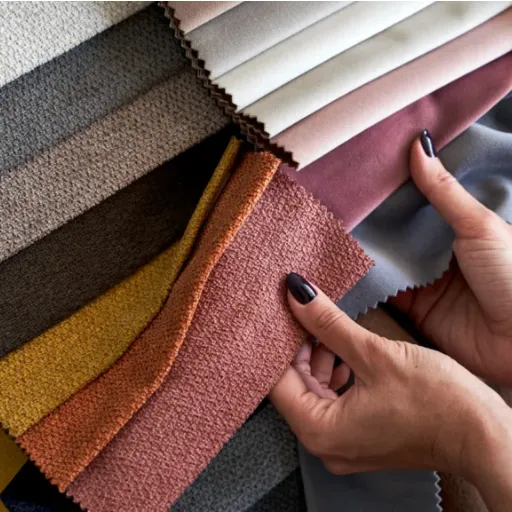
Advantages of Cotton Fabrics
Cotton fabrics maintain an image for comfort and breathability, making them excellent choices for casual wear. The natural fibers allow air to flow through, helping cool the body and encouraging moisture evaporation. This makes cotton fabric highly valuable in warm climate zones or for activities generating heat and perspiration.
Another advantage of cotton is its gentle touch on the skin. Natural fibers help reduce skin irritation, which explains why cotton is associated with relaxation. Everyone truly enjoys clothing made from soft-hand cotton because it withstands various conditions and suits all occasions—from clothing to bedsheets to baby items.
Cotton is also durable and easy to maintain. While it may require more frequent washing compared to man-made fabrics, cotton can be machine-washed and remains resistant to ordinary wear and tear. Moreover, cotton grown organically or sustainably offers eco-friendly options, reducing the environmental footprint involved in fabric production. These characteristics make cotton a reliable and responsible choice for a wide array of applications.
Advantages of Polyester Fabrics
Polyester fabric offers many advantages, making it an ingredient of numerous textile products. Among its many benefits, durability tops the list. It’s strong, doesn’t shrink or stretch significantly, and offers good resistance against wrinkles compared to some natural fibers—making it long-lasting and rugged.
Polyester’s rapid drying speed represents another major advantage. Since polyester doesn’t absorb much water, it dries quickly. This makes it ideal for sports apparel, outdoor items, or items exposed to humid conditions. Moisture doesn’t stay long in polyester articles, which proves convenient for people on the move or those living in damp environments.
Being versatile and cost-effective simultaneously makes polyester remarkable. It can be manufactured en masse at minimized cost and blends well with other fibers, such as cotton, combining ideal elements of both. This versatility and value are expressed through polyester’s broad scope, which includes fashion, home decor, and industrial materials. Such traits lend convincing weight to polyester as a reliable and efficient fabric choice.
Disadvantages of Both Materials
⚠️ Polyester Drawbacks
- Less breathable than natural fibers
- Traps heat and moisture against skin
- Can retain odors, requiring more washing
- Less durable against sun exposure
- Environmental concerns (non-biodegradable)
⚠️ Cotton Drawbacks
- Prone to shrinking and fading
- Wrinkles easily
- Retains water, longer drying times
- Not ideal for activewear or wet conditions
- Resource-intensive production (water, pesticides)
Polyester’s primary drawback lies in its lack of breathability compared to natural fibers like cotton. While it keeps you warm, this limited breathability causes discomfort in hot and sweaty conditions. The fabric tends to trap heat and moisture against the skin. Additionally, polyester fabrics absorb smells less efficiently, requiring more frequent washing to maintain freshness.
Cotton is soft and breathes well, but it isn’t as sturdy and doesn’t resist shrinking, fading, or wrinkling as effectively. It tends to retain water, resulting in longer drying times that make cotton inappropriate for activewear or wet conditions. Cotton production is also known for being water-intensive and involves excessive chemical pesticide use, adversely affecting the environment.
Blending these materials may address some disadvantages but doesn’t eliminate them entirely. A cotton-polyester combination might still be somewhat less breathable than pure cotton while retaining polyester’s odor tendencies and cotton’s deteriorating properties. While blending might balance characteristics, it leaves some single-fiber disadvantages intact, making blends less optimal in contexts requiring specialized materials.
Frequently Asked Questions (FAQ)
Q: What are the main performance differences between cotton and polyester?
A: Cotton and polyester are distinctly different in performance characteristics. Cotton is a natural fabric harvested from the cotton plant, offering excellent breathability and extreme softness. Polyester is a human-made fiber derived from petrochemicals with several beneficial properties including durability and wrinkle resistance. Cotton, being a porous fabric, offers superior moisture transport and airiness, while polyester excels in shape retention and quick drying.
Q: Which is better for sports and outdoor clothing—polyester or cotton?
A: Polyester is typically chosen for activewear because of its moisture-wicking properties and quick drying capabilities. Polyester moves moisture from the skin to the outer surface where it evaporates rapidly. Cotton holds water by absorbing it, leading to discomfort when wet and becoming heavy—whereas polyester maintains shape and performance during activity. Several brands make cotton blends to balance comfort and performance.
Q: How do cotton and polyester compare for everyday clothing and apparel?
A: Comfort, softness, and breathability are cotton’s most appreciated qualities. High-quality cotton varieties like Sea Island cotton or long-staple varieties offer luxurious comfort. Cotton is best for sensitive skin and naturally skin-friendly. However, cotton requires more care than polyester to prevent shrinking or wrinkling. Cotton options include conventional farming and organic alternatives.
Q: Is cotton-polyester blended fabric better than pure cotton or pure polyester?
A: Cotton blended with polyester incorporates the best features of both materials. Cotton provides comfort and moisture absorption, whereas polyester imparts strength and shape recovery. A cotton-polyester blend irons well and holds up durably, potentially better than 100% cotton or pure polyester alone. The ideal fabric blend depends on your preferences for care requirements, comfort, and durability.
Q: Which fabric is more sustainable: cotton or polyester?
A: Sustainability comparisons between natural and synthetic fabrics are complex. Conventional cotton can be resource-intensive in water and pesticides, while virgin polyester is petroleum-based and lacks recycling solutions in many areas. Recycled polyester and responsible derivatives can decrease dependency on virgin polyester and improve environmental outcomes when manufactured responsibly. Ultimately, environmental advantages relate to farming practices, recycling schemes, and garment lifecycle considerations.
Q: Can polyester irritate skin compared to high-quality cotton?
A: People with sensitive skin often prefer cotton because it’s naturally friendly, breathable, and less likely to irritate. Pure polyester and some polyester blends may trap heat and humidity against the skin, potentially affecting more sensitive individuals. However, polyester isn’t always an irritant—many polyester garments are currently treated or blended specifically to ensure comfort.
Q: When should I choose cotton instead of polyester?
A: Cotton textiles are ideal for bedding, undergarments, everyday wear, and garments requiring softness and breathability. Polyester works better for long-lasting outerwear, sportswear, and garments needing wrinkle resistance. For shirts, both fabrics play good roles: polyester shirts dry faster and resist wrinkles, whereas cotton is soft to the touch and breathes better.
Q: How do different varieties of polyester and cotton influence fabric choice?
A: Polyester varieties include virgin polyester and recycled polyester—the latter recuperates materials and requires less environmental impact, while the former is fully synthetic. Cotton types include conventional cotton and high-end fibers such as Sea Island cotton. Thread count and fiber quality influence comfort ratings for durability. Choosing between natural and synthetic fabric should consider fiber quality, intended use, and personal concerns such as sustainability, care requirements, and feel.
References
-
House of U: Polyester vs Cotton – What’s the Difference? – Discusses the durability of polyester versus the skin-friendliness of cotton, along with their pros and cons.
-
Recovo: Cotton or Polyester – The Ultimate Guide for Your Clothing – Highlights the natural comfort, breathability, and hypoallergenic properties of cotton compared to polyester.
-
Glory Allan: Choosing the Right Fabric – 100% Cotton vs. Poly Cotton – Explains the differences between 100% cotton and poly-cotton blends, including breathability and softness.









